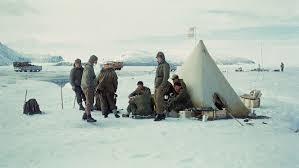A brief history of some of our favourite tool watches
- Sam Haizelden
- Jun 29, 2024
- 2 min read
In 2024, we have no need for mechanical wristwatches. The time is available to us as we stare at our computer screens and scroll on our mobile phones, and any number of apps can provide us with stopwatches, calculators, world timers and even diving apparatus. So why do we continue to strap these small horological machines to our wrists?
There are many answers to that question, but I think a large part of it is a nod to the past when watches were used to complete tasks that technology allows us to take for granted today. When tool watches were used as tools and the accuracy of your wristwatch really could land you in a life-or-death situation. So, it’s only fitting that brands still celebrate the accomplished history of their timepieces and I’d love to share with you some of my favourites from our current stock.
Let's start with the Breitling Navitimer. It was originally created in 1952 for the US Aircraft Owners and Pilots Association who asked Breitling for a chronograph which would enable pilots to calculate average speed, distance travelled, fuel consumption, rate of climb, and convert miles to kilometers or nautical miles – all of this can be carried out using an adaption of the logarithmic slide rule integrated into a rotating bezel. The watch became such a hit with the AOPA that in the late 1950’s Breitling released the Navitimer on the open market, the much-loved reference 806.
While many may associate the Rolex Explorer with tales of the first watch to reach the summit of Mount Everest, few likely know the back story behind the Explorer II. Far from being the second edition of the Explorer, it’s a different watch entirely and was created in 1971 for use by cave explorers. They would often work underground for many days at a time and in the darkness, they would lose notion of day or night. The first Explorer II, reference 1655, featured a fixed 24-hour bezel and a large, brightly coloured, luminous, arrow-shaped 24-hour hand. The watch also had a date function and offered 100m of water resistance.
There are few dive watches as iconic as the Omega Seamaster. Early models were used by the British military in the Second World War and after proving to be reliable and durable in the most testing of environments, in 1948 Omega released the first civilian Seamaster. It has remained a core model in the Omega catalogue ever since, continuing to push the boundaries of accuracy, durability, and water resistance.
As we’ve seen above, the 1950’s was an exciting era for exploration of the land, sea and air. In 1952 one team went that step further and launched the British North Greenland Expedition, as a scientific mission to carry out studies in glaciology, meteorology, geology and physiology. Members of the expedition wore Tudor watches to assist with their investigations, needing them to be robust, legible and capable of withstanding extreme temperatures and conditions. In 2023 Tudor celebrated these watches with the re-release of the Tudor Ranger, combining vintage inspiration with up-to-date technology.
With achievements such as these, it’s no surprise that we’re still drawn to vintage-inspired tool watches today. The above-mentioned watches are currently available in our shop, or get in touch to find out more.







Comments